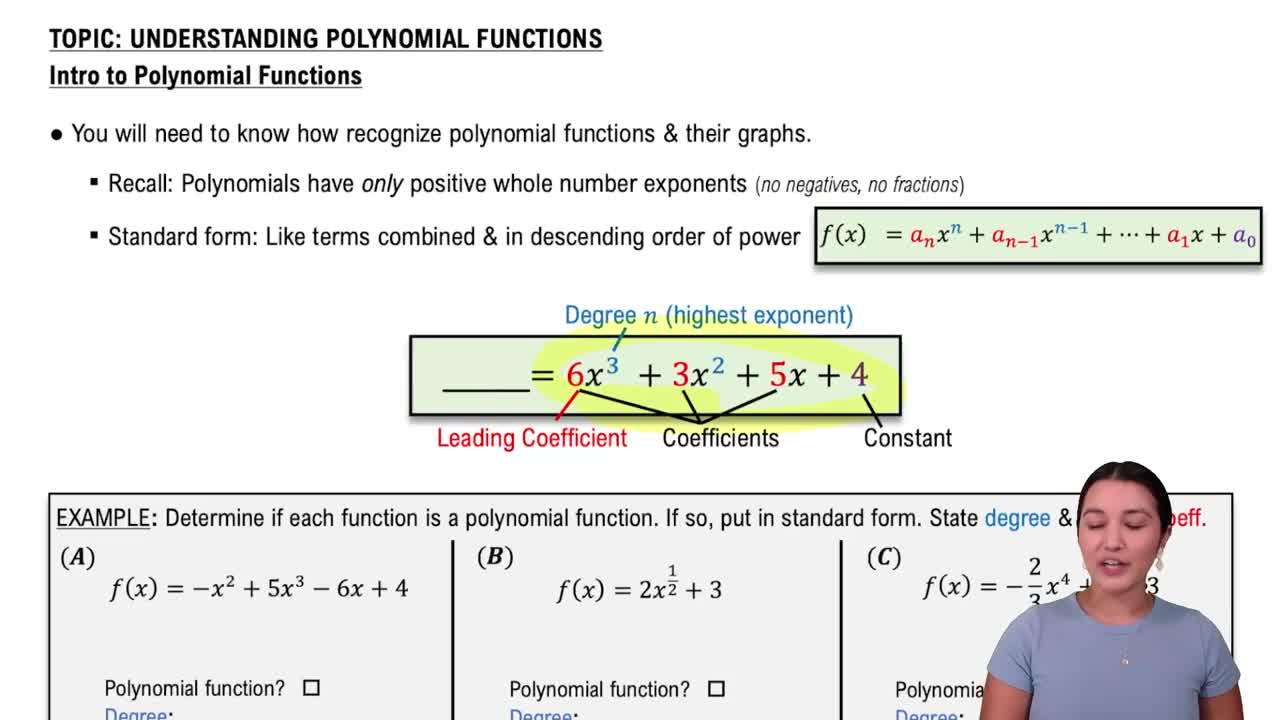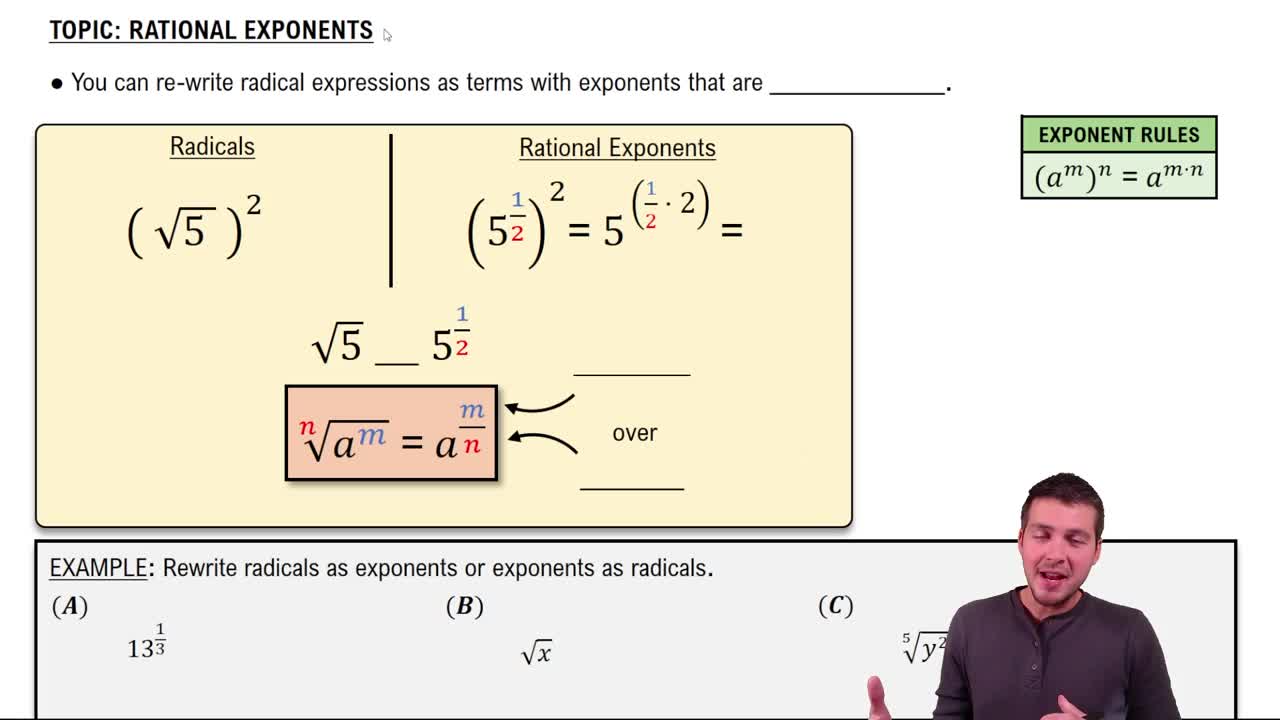Here are the essential concepts you must grasp in order to answer the question correctly.
Polynomial Functions
A polynomial function is a mathematical expression involving a sum of powers in one or more variables multiplied by coefficients. The degree of the polynomial is determined by the highest power of the variable. Understanding polynomial functions is crucial for analyzing their behavior, including finding zeros, which are the values of x that make the function equal to zero.
Recommended video:
Introduction to Polynomial Functions
Complex Zeros
Complex zeros are solutions to polynomial equations that may not be real numbers. They can be expressed in the form a + bi, where a and b are real numbers, and i is the imaginary unit. The Fundamental Theorem of Algebra states that a polynomial of degree n has exactly n roots, counting multiplicities, which may include complex zeros when real solutions are insufficient.
Recommended video:
Factoring and the Rational Root Theorem
Factoring a polynomial involves expressing it as a product of simpler polynomials, which can help identify its zeros. The Rational Root Theorem provides a method to find possible rational roots of a polynomial by examining factors of the constant term and the leading coefficient. This theorem is often a starting point for finding both real and complex zeros of polynomial functions.
Recommended video:
 Verified step by step guidance
Verified step by step guidance


